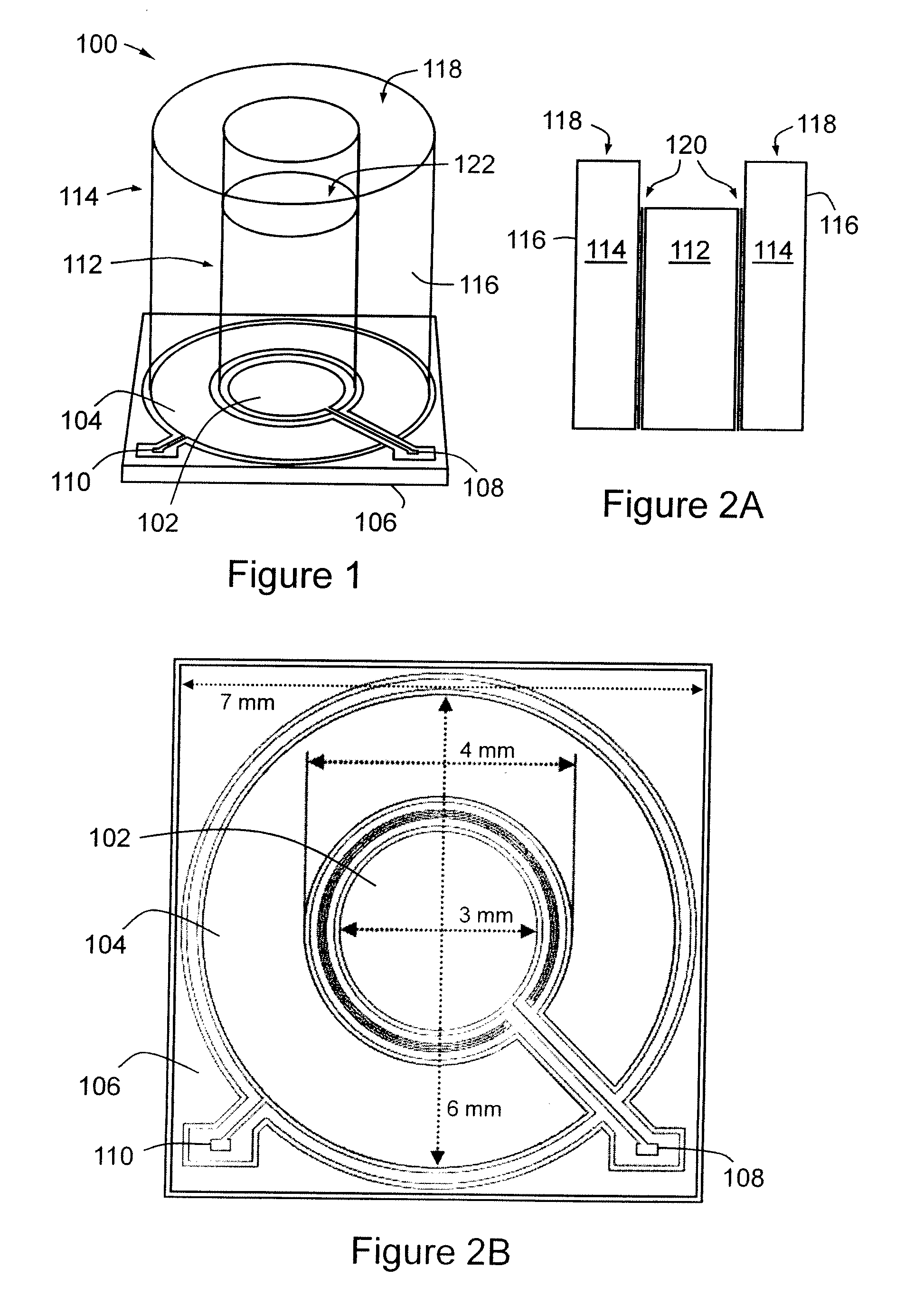Dual radiation detector
a detector and detector technology, applied in the field of radiation detectors, can solve the problems of deteriorating photopeak resolution, impractical passive collimation, and large probes for many intraoperative applications, and achieve the effect of increasing the total detection efficiency
- Summary
- Abstract
- Description
- Claims
- Application Information
AI Technical Summary
Benefits of technology
Problems solved by technology
Method used
Image
Examples
Embodiment Construction
[0073]FIG. 1 is a perspective, schematic view of a detector module 100 comprising dual concentric Si planar photodiodes on a single Si wafer directly optically coupled to dual optically isolated high Z scintillators, and so referred to below as Dual Photodiode Dual Scintillator (DPDS) detector module 100. Thus, referring to FIG. 1, DPDS detector module 100 comprises a generally circular, inner Si planar photodiode 102 and a generally annular, outer Si planar photodiode 104 (both p-n junctions are P+ doped), located concentrically upon an N+ doped Si wafer substrate or base 106. Photodiodes 102, 104 are in fact produced on the Si base 106, which makes them particularly convenient to manufacture, especially in compact form. The photodiodes 102, 104 are of approximately 0.5 mm thickness, and have respective contact pads 108, 110. Above the photodiodes 102, 104 (hence opposite base 106) and directly coupled thereto are two corresponding high Z scintillators: inner scintillator 112 and o...
PUM
 Login to View More
Login to View More Abstract
Description
Claims
Application Information
 Login to View More
Login to View More - R&D
- Intellectual Property
- Life Sciences
- Materials
- Tech Scout
- Unparalleled Data Quality
- Higher Quality Content
- 60% Fewer Hallucinations
Browse by: Latest US Patents, China's latest patents, Technical Efficacy Thesaurus, Application Domain, Technology Topic, Popular Technical Reports.
© 2025 PatSnap. All rights reserved.Legal|Privacy policy|Modern Slavery Act Transparency Statement|Sitemap|About US| Contact US: help@patsnap.com



